- California Assembly OKs highest minimum wage in nation
- S. Korea unveils first graphic cigarette warnings
- US joins with South Korea, Japan in bid to deter North Korea
- LPGA golfer Chun In-gee finally back in action
- S. Korea won’t be top seed in final World Cup qualification round
- US men’s soccer misses 2nd straight Olympics
- US back on track in qualifying with 4-0 win over Guatemala
- High-intensity workout injuries spawn cottage industry
- CDC expands range of Zika mosquitoes into parts of Northeast
- Who knew? ‘The Walking Dead’ is helping families connect
As Typhoon Jangmi dissipates, more downpours expected overnight
Typhoon Jangmi dissipated on Monday afternoon after it passed through the southeastern tip of South Korea, leaving limited damage, the national weather agency said.
But torrential rains are likely to continue in some parts of the country into Tuesday after downpours that started on Aug. 1 wreaked havoc, leaving 42 people dead or missing.
The first typhoon to affect the country this season made landfall on the southeastern island of Geoje at 2:50 p.m, the Korea Meteorological Administration said. It weakened to an extratropical cyclone at around 5 p.m., while moving over 10 kilometers northwest of nearby Ulsan. No major damage was reported.
The typhoon dissipated some 38 hours after it formed at seas some 600 kilometers southwest of Okinawa, Japan, the previous day.
The agency said heavy rain and strong wind are expected to continue in some parts of the country at night, including the Seoul metropolitan area and Gangwon, Chungcheong and Gyeongsang provinces.

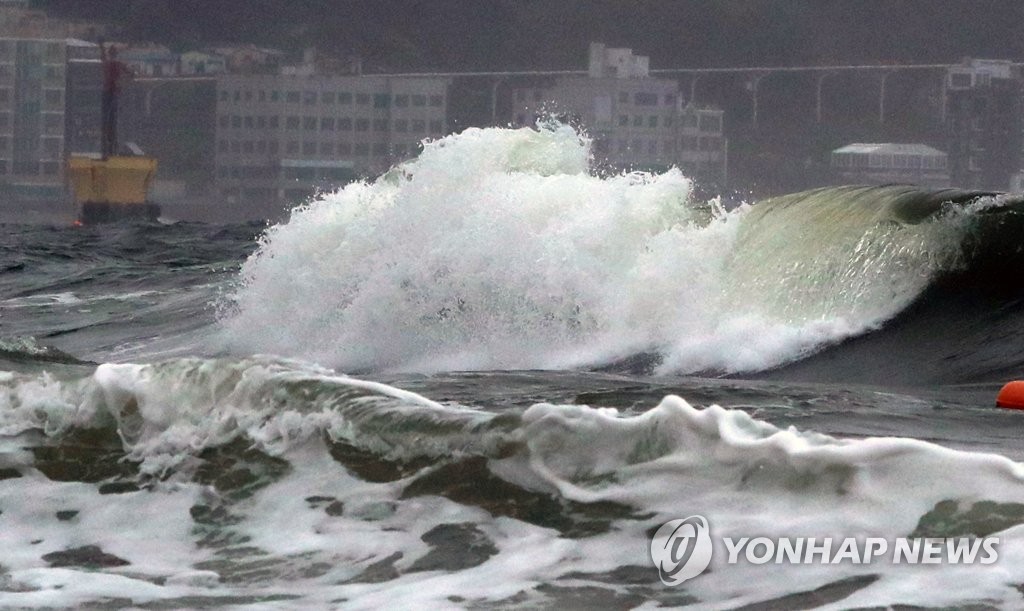
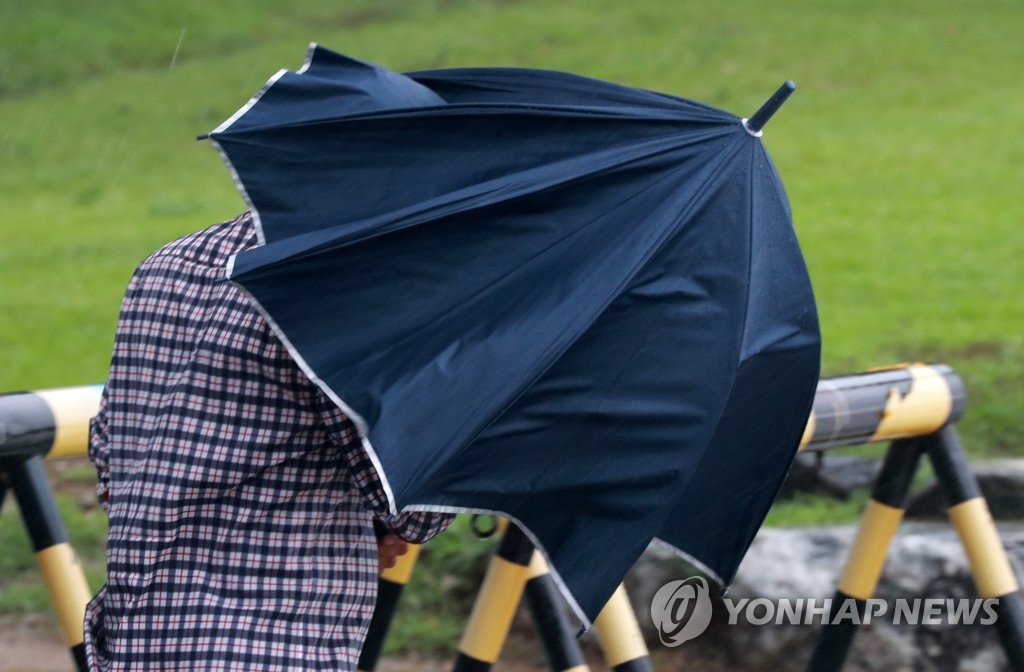
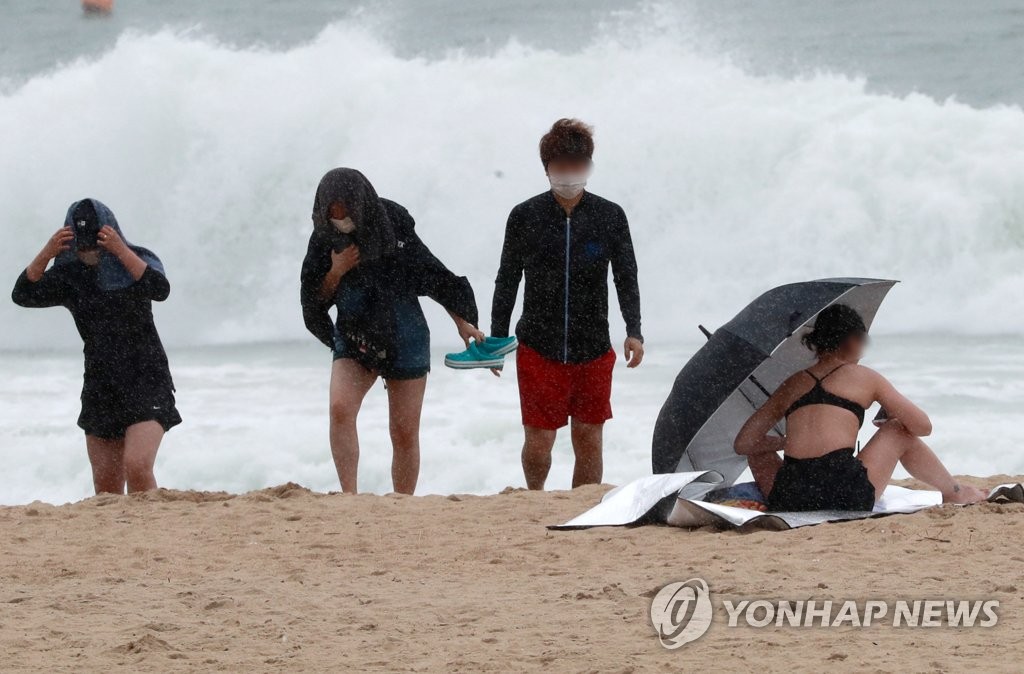
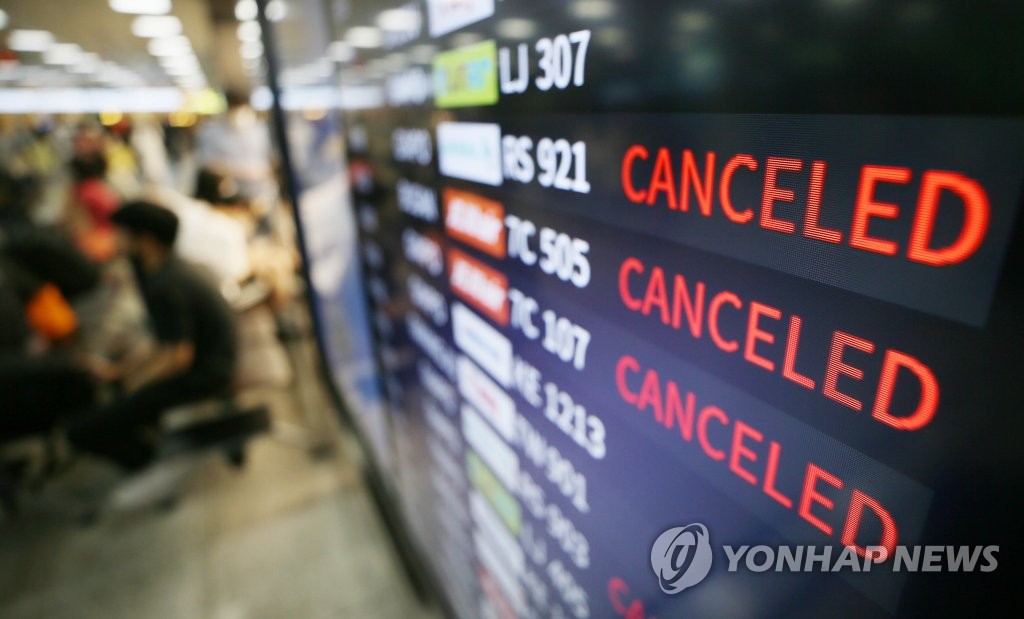
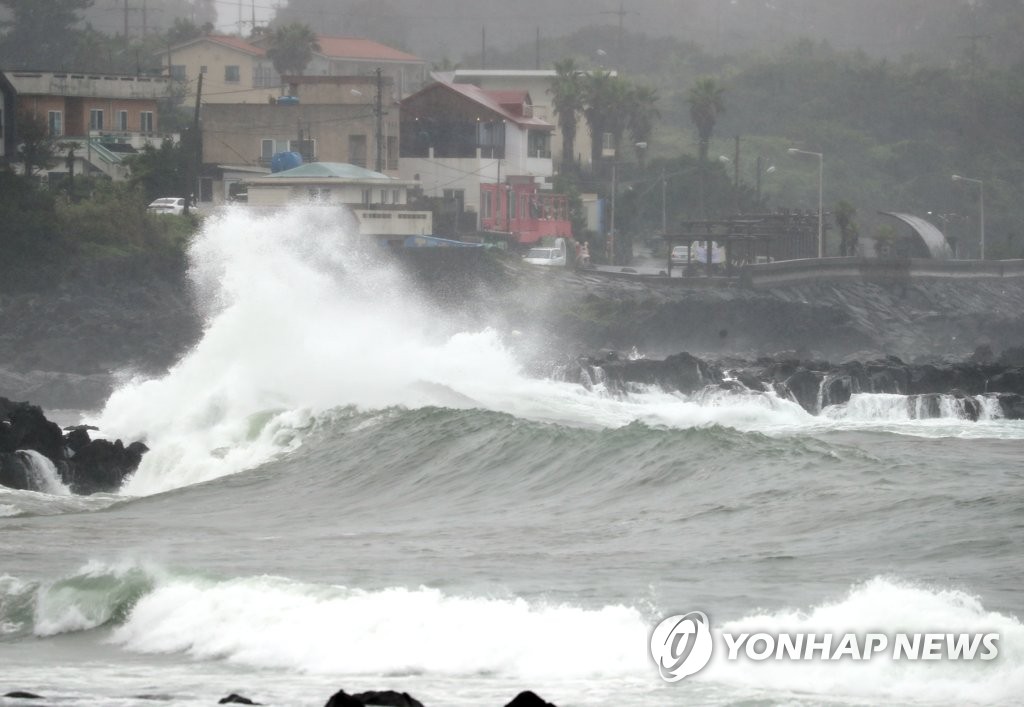
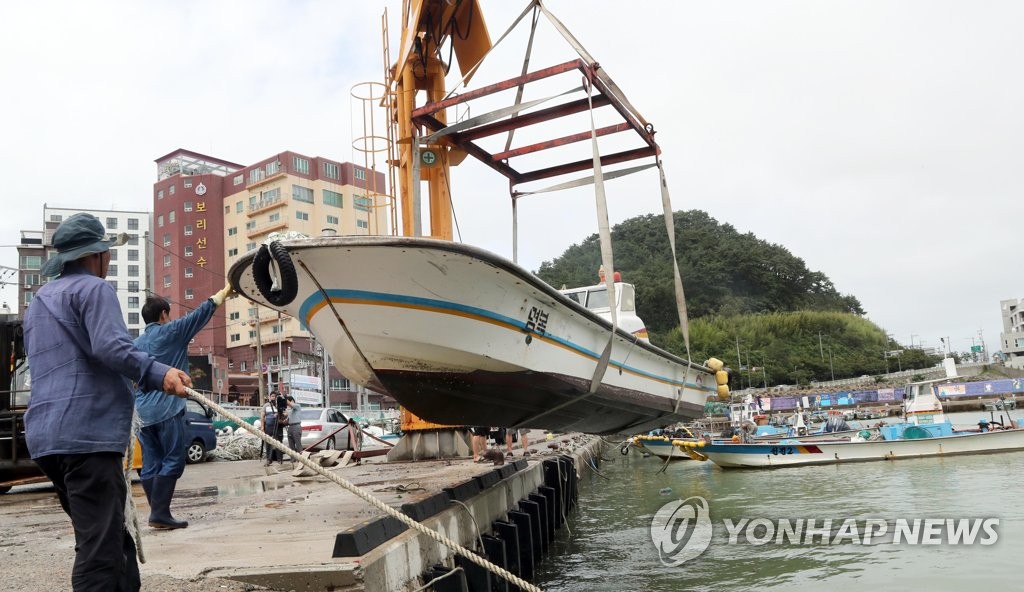
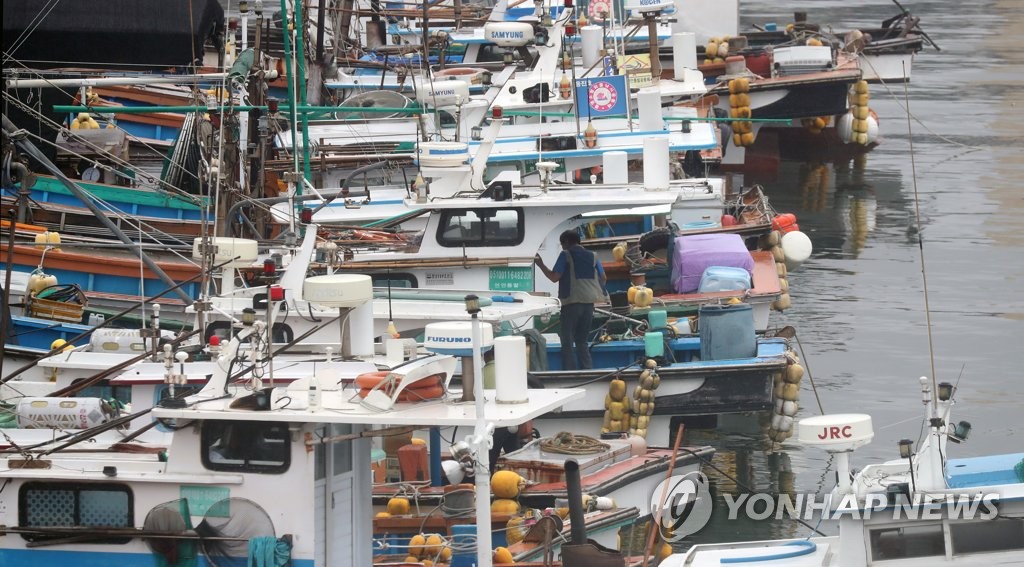
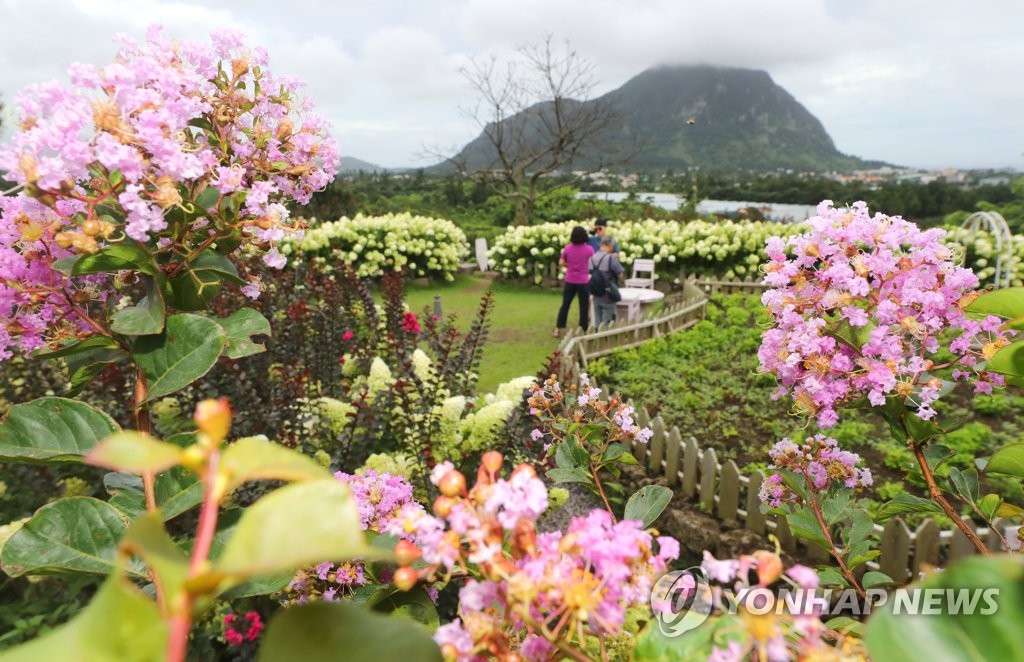
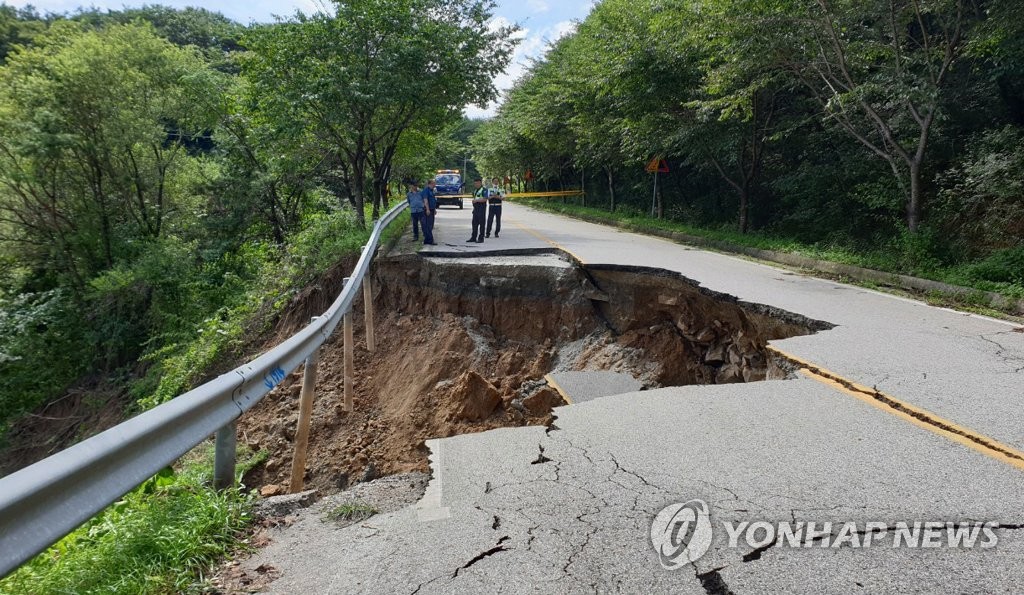

A pedestrian walks through heavy rain in the southeastern city of Busan on Aug. 10, 2020. (Yonhap)
On the eastern coast of Gyeongsang and Gangwon provinces, wind speed was forecast to reach up to 35-60 km per hour, peaking at 90 km per hour.
The weather agency projected clouds and rain to hover over the country into Tuesday.
Precipitation for the two-day period was expected at 50-150 millimeters in the southern areas of Gyeonggi and Gangwon provinces, as well as Chungcheong Province and North Jeolla.
Rain of 30 to 80 mm was also forecast for parts of Seoul, Gyeonggi and Gangwon provinces as well as South Jeolla and Gyeongsang provinces.
The weather agency advised preventive measures against possible damage, warning that ground could have weakened due to recent downpours.
In Jeju, which was among the first areas to be affected by Jangmi, 36 domestic flights were canceled as a precautionary measure. An operation ban was also placed on 15 ships that connect Jeju to other parts of the country via nine routes, with some 2,000 boats docked for safety.
Damage, however, was limited, with wind speed measuring at 1 to 5 meters per second at noon. A typhoon advisory was lifted as of 1 p.m.
Still, authorities said around 30-80 millimeters of rain is expected to fall on the island until Tuesday morning.
The typhoon, which means “rose” in Korean, came as the country is going through an unusually long monsoon season this year.
This year’s monsoon season, which began on June 24 in the central region, has shown no signs of letting up, and it is likely to end later than the Aug. 10 record in 1987.
The monsoon season is also expected to set a fresh record as the longest one after a 49-day record in 2013. The monsoon has continued for 47 days and is likely to exceed 50 days, as seasonal rain is forecast to extend to mid-August.
The seasonal rain, which has pounded the central region with heavy downpours in August, has left 42 people dead or missing and damaged 17,958 facilities. Nearly 7,000 have been displaced from their homes.
The prolonged inclement weather has hampered restoration works nationwide, with only 50 percent of the damaged facilities having been repaired.
In a government response meeting, Prime Minister Chung Sye-kyun urged officials to take “exhaustive” measures to brace against the typhoon while abiding by safety rules.
“While this typhoon is a small one, its speed is very quick, raising concerns over damage from strong winds,” Chung said, “Please take exhaustive measures against strong winds in Jeju and the southern coastal areas which are under the typhoon’s influence.”
Chung, meanwhile, reminded the public to refrain from going out unnecessarily and officials to heed to safety during their rescue and at-the-scene duties.








![일본 사도광산 [서경덕 교수 제공. 재판매 및 DB 금지]](http://www.koreatimesus.com/wp-content/uploads/2024/07/PYH2024072610800050400_P4-copy-120x134.jpg)


